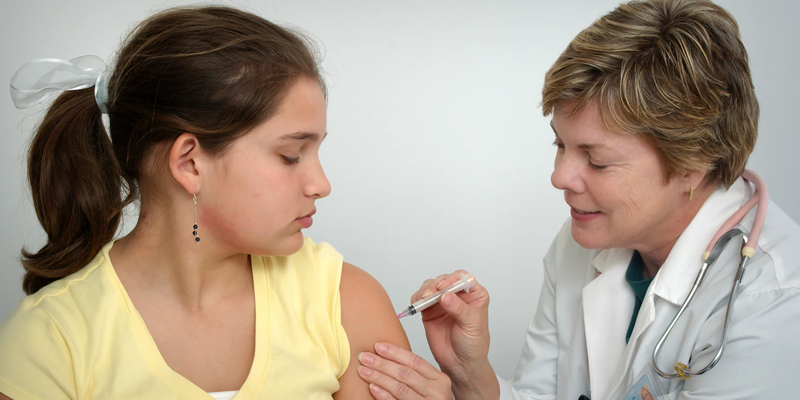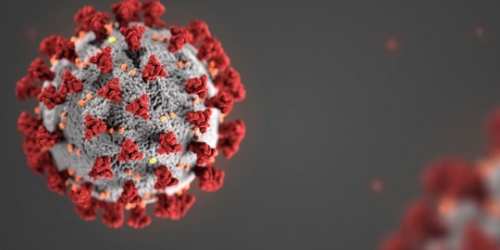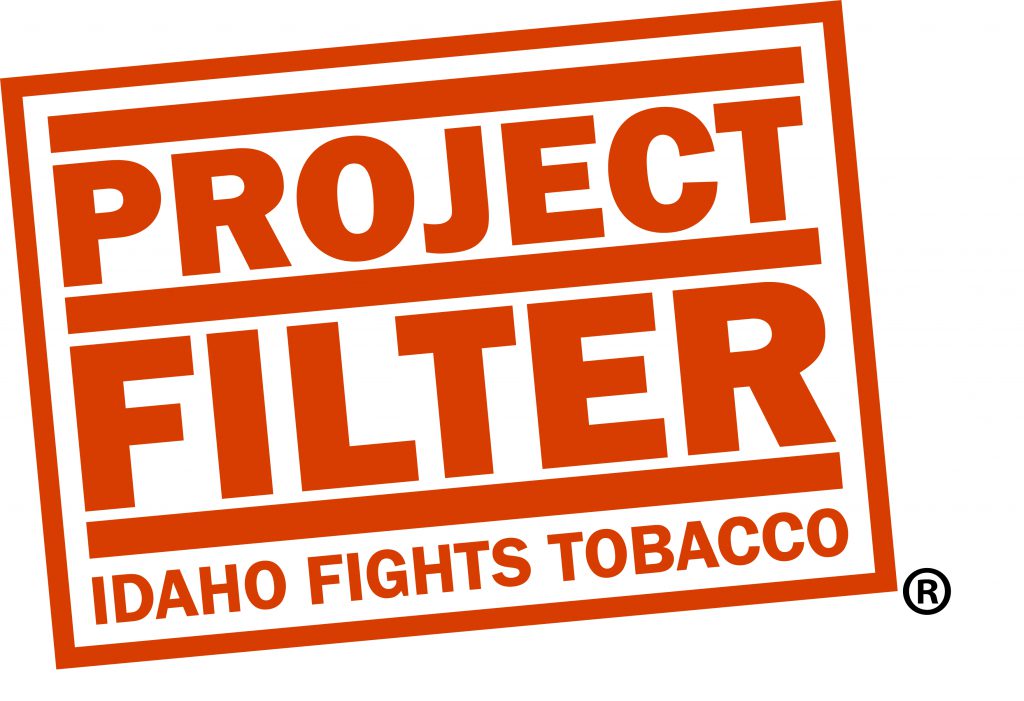Category: Preventative Health
HPV and Related Cancers: Questions and Facts

By: Brie Veltri, Health Program Specialist, Idaho Department of Health and Welfare
What is HPV?
HPV, or Human Papillomavirus, is the most common sexually transmitted infection in the U.S. It is a common virus that causes most cases of cervical cancer, as well as vulvar and vaginal cancer in women, anal and penile cancer in men, and throat cancer and genital warts in men and women. For most people, HPV clears on its own. But, for others who don’t clear the virus, it could cause certain cancers and diseases.
How is it contracted and how does it affect me?
- HPV is contracted through skin to skin contact with infected individuals.
- About 14 million new HPV infections occur every year in the US.
- HPV if not treated can go on to cause cancers later in life. This includes oropharyngeal, anal, cervical, vaginal, vulvar, and penile cancers.
Ways to prevent HPV and other related cancers:
- HPV vaccination is a form of cancer prevention for both males and females.
- It’s important to vaccinate before potential exposure to cancer-causing HPV types
- The best way to prevent HPV is to get vaccinated.
- For individuals 9 through 14 years of age, GARDASIL 9 can be administered using a 2-dose or 3-dose schedule. For the 2-dose schedule, the second dose should be administered 6–12 months after the first dose. If the second dose is administered less than 5 months after the first dose, a third dose should be given at least 4 months after the second dose. For the 3-dose schedule, GARDASIL 9 should be administered at 0, 2 months, and 6 months.
- For individuals 15 through 45 years of age, GARDASIL 9 is administered using a 3-dose schedule at 0, 2 months, and 6 months.

Getting Vaccinated:
- Children: The HPV vaccine is a routine recommendation for both males and females ages 9-26.
- Earlier is better. We see that once children enter their teen years it is harder to get them into see a provider due to conflicting interest with school, sports, extra-circulars, etc.
- It CAN’T wait. Vaccinate before exposure or the vaccine is not effective.
- Adults: In 2019 CDC released vaccine to adults ages 27-45 as shared decision making.
- Vaccination can help protect against certain cancers caused by other HPV types you have not been exposed to yet. Infection with one type of HPV does not prevent infection with another type.
- It can still be beneficial to most people. Talk with your health care provider to see if you should receive the vaccine.
- Most insurance cover vaccinations. Check with your insurance provider to see if it is covered.
Facts:
- As of 2019, only 45.9% of Idaho girls and 41.0% of Idaho boys had been vaccinated for HPV (IRIS).
- HPV vaccination is most effective if administered at the age of 11 or 12.
- April 11-17 is National Oral, Head, and Neck Cancer Awareness Week.
Additional Resources:
HPV Free Idaho
If there were a vaccine to prevent cancer, would you get it for your children? Of course you would.
- The HPV vaccine IS cancer prevention.
- The HPV vaccine is very important because it PREVENTS cancer. No child dreams of being a cancer patient. The HPV vaccine is cancer prevention.
- The best way to prevent HPV-associated cancers is to have your sons and daughters completely vaccinated against HPV. The HPV vaccine is most effective when given between 11-12 years of age when the body will produce the best immune response to develop protection before coming in contact with the virus.
- Research has shown that getting the HPV vaccine does not make kids more likely to be sexually active or start having sex at a younger age.
- We vaccinate so that children have the best protection possible long before they are exposed to an infection, as is the case with measles and the other recommended childhood vaccines.
- A missed opportunity is a healthcare encounter where a person does not receive a vaccination for which he or she is eligible.
- Currently 79 million Americans are infected with HPV, increasing at a rate of approximately 14 million new cases each year in the U.S. In the U.S., 33,000 HPV-associated cancers are diagnosed yearly, about 20,600 among females and 12,600 among males.
- Cervical cancer is the most common HPV-associated cancer among females and oropharyngeal cancers are the most common among males. Of the 33,000 new HPV-associated cancers that occur each year, it is estimated that about 26,000 could be prevented through HPV vaccination.
Unfortunately, there is no cure for HPV. It can only be prevented.
- Centers for Disease Control and Prevention (CDC). Human papillomavirus. In: Hamborsky J, Kroger A, Wolfe C, eds. Epidemiology and Prevention of Vaccine-Preventable Diseases. 13th ed. Washington DC: Public Health Foundation; 2015:175-186.
- Centers for Disease Control and Prevention (CDC). HPV and oropharyngeal cancer. https://www.cdc.gov/std/hpv/stdfact-hpv.htm. Last reviewed March 14, 2018. Accessed January 21, 2020.
- Centers for Disease Control and Prevention (CDC). 2015 sexually transmitted diseases treatment guidelines: human papillomavirus (HPV) infection. https://www.cdc.gov/std/tg2015/hpv.htm. Last reviewed June 4, 2015. Accessed February 3, 2020.
- Centers for Disease Control and Prevention (CDC). Types of cancer caused by HPV. https://www.cdc.gov/hpv/parents/cancer.html. Last reviewed April 29, 2019. Accessed March 9, 2020.
- Centers for Disease Control and Prevention (CDC). STD Facts – HPV and Men. https://www.cdc.gov/std/hpv/stdfact-hpv-and-men.htm. Last reviewed December 28, 2016. Accessed January 28, 2020.
- Centers for Disease Control and Prevention (CDC). Genital HPV Infection – Fact Sheet. https://www.cdc.gov/std/hpv/stdfact-hpv.htm. Last reviewed August 20, 2019. Accessed October 23, 2019.
Colorectal Cancer: Fact or Fiction

By: Brie Veltri, Health Program Specialist, Idaho Department of Health and Welfare
March is National Colorectal Cancer Awareness Month
Colorectal cancer (cancer of the colon or rectum) is the third most common cancer in the United States and the second leading cause of death from cancers that affect both men and women. Colorectal cancer affects people in all racial and ethnic groups and is most common in people age 50 and older.
MYTH: Colorectal cancer only affects men.
Colorectal cancer affects men and women of all racial and ethnic groups.
FACT: Colorectal cancer is the second leading cancer killer in the U.S.
Of cancers affecting both men and women, colorectal cancer is the second leading cancer killer in the United States and the third most common cancer in men and in women.
FACT: Getting screened for colorectal cancer can help prevent the disease.
Screening helps find precancerous polyps (abnormal growths) in the colon and rectum so they can be removed before they turn into cancer. Screening also helps find colorectal cancer early, when treatment works best.
MYTH: If you don’t have symptoms, it means you don’t have colorectal cancer.
Colorectal polyps and colorectal cancer don’t always cause symptoms, especially early on. But screening can find polyps and colorectal cancer even before symptoms appear. That’s why getting screened regularly for colorectal cancer is so important.
FACT: The recommended age for screening is 50 years old.
Your risk of getting colorectal cancer increases as you get older. About 90% of cases occur in people who are age 50 or older. However, you may need to be tested earlier or more often than other people if you have inflammatory bowel disease such as Crohn’s disease or ulcerative colitis, a personal or family history of colorectal cancer or colorectal polyps, or a genetic syndrome such as familial adenomatous polyposis (FAP) or hereditary non-polyposis colorectal cancer (Lynch syndrome). If you think any of these things are true for you, ask your doctor when and how often you should be tested.
MYTH: The only screening test for colorectal cancer is colonoscopy.
There are several types of screening tests for colorectal cancer, including some that you can do at home. Learn about all of the screening test options and talk to your doctor about which is right for you. The best test is the one you do!
FACT: Symptoms of colorectal cancer include: blood in or on your stool, stomach pain, aches or cramps that don’t go away, losing weight and you don’t know why.
If you have any of these symptoms, talk to your doctor. They may be caused by something other than cancer. The only way to know what is causing them is to see your doctor.
FACT: Medicare and most insurance plans cover colorectal cancer screenings.
Check with your plan to see what’s covered. In addition, free or low-cost screenings may be available for you. Six states in CDC’s Colorectal Cancer Control Program provide colorectal cancer screening to low-income men and women aged 50 to 64 years who are underinsured or uninsured for screening, when resources are available, and there is no other payment option.
Talk with your provider to find out what screening option is best for you! For more information about cancer prevention, visit the Comprehensive Cancer Control Program’s website.
Novel Coronavirus: Know the Facts

PLEASE NOTE: This blog post was originally published on February 28, 2020. For up-to-date information about the coronavirus/COVID-19 please visit coronavirus.idaho.gov.
By: Dr. Eileen Dunne, Epidemic Intelligence Service Officer with the Centers for Disease Control and Prevention, assigned to the Idaho Department of Health & Welfare
Public health agencies worldwide are responding to an outbreak of respiratory disease caused by a novel coronavirus that was first detected in Wuhan, China. The disease caused by this novel coronavirus is known as COVID-19.
What is novel coronavirus?
Coronaviruses are a large family of viruses, some of which cause illness in people and some that are found in animals. The coronavirus that causes COVID-19 hasn’t been seen in people before, so it is called new (novel). There are other known human coronaviruses that cause mild respiratory illnesses like the common cold, especially in fall and winter. The novel coronavirus is thought to have come from an animal in China and then spread between people. The exact source is currently unknown.
How does coronavirus spread?
Coronaviruses spread from person to person. Someone who has COVID-19 can spread the illness to others by coughing or sneezing, in the same way influenza and other respiratory infections are spread. Other means of spread are possible but are not thought to be the main reason for rapid spread of novel coronavirus.
What is the coronavirus concern for Idaho?
The risk to the general population in Idaho is currently low, but not zero. Community spread in countries outside of China is concerning. More cases are expected to be identified in the United States, and person-to-person spread might occur. Idaho public health officials are monitoring the situation very closely and working with federal, state, and local partners. We are prepared to respond if someone is sick or has been exposed.
Coronavirus vs. influenza – what’s a bigger risk?
To date, fewer than 100 cases of COVID-19 and no deaths have been detected in the United States. In contrast, seasonal influenza (flu) causes millions of infections and kills more than 10,000 Americans each year. Flu activity is currently high. During the 2019-2020 influenza season to date, 18 influenza-related deaths have occurred in Idaho.
What people can do to protect themselves?
Although the risk of COVID-19 in Idaho is currently low, we’re asking everyone to follow the normal precautions for avoiding respiratory diseases – stay home if you’re sick, avoid sick people, and cover your coughs and sneezes. If you have recently returned from an area with widespread community transmission (see CDC travel advisories at https://wwwnc.cdc.gov/travel/notices) and you feel sick with a fever, cough, or difficulty breathing, seek medical care. Before you go to a doctor’s office or emergency room, call ahead and tell them about your recent travel and your symptoms.
If you haven’t got your flu shot yet this season, there is still time!
Will coronavirus affect my travel plans?
CDC has issued a warning to avoid nonessential travel to certain countries including China. CDC recommends that people reconsider travel by cruise ship to or within Asia. CDC has also issued travel alerts for several other countries because of community spread of the virus that causes COVID-19. Check CDC travel health notices before planning international travel.
What about other people who have recently traveled?
Some travelers returning from China or certain cruise ships have been subject to monitoring by public health officials or isolated for up to 14 days since their last exposure to the virus that causes COVID-19. People who have completed monitoring or been released from isolation pose no risk of spreading the virus to others.
Where should people go for valid information?
CDC updates its website nearly daily with the latest information. The World Health Organization also is a trusted source of information about COVID-19. See WHO COVID-19 myth busters at https://www.who.int/emergencies/diseases/novel-coronavirus-2019/advice-for-public/myth-busters.
For information on COVID-19 in Idaho, see the novel coronavirus page on the DHW website, https://healthandwelfare.idaho.gov/health-wellness/diseases-conditions/covid-19.
Matters of the Heart

By: Mimi Fetzer RD, LD, with The Idaho Diabetes, Heart Disease, and Stroke Prevention Program
February is a time for love, relationships, and matters of the heart. That includes the relationship we have with our heart health. The heart pumps blood to all parts of the body. Blood carries oxygen, nutrition, hormones, and removes waste. The best way to strengthen the relationship with our heart is to adopt a healthy lifestyle.
Tips for a Heart-Healthy Lifestyle:
Reduce sodium and saturated fat intake. Instead, enjoy nutritious foods.
The heart needs a combination of nutrients to function at its best. Consuming a variety of different fruits, vegetables, whole grains, nuts, seeds, lean protein, and low-fat dairy is the best way to get these nutrients. Too much of certain nutrients, such as sodium and saturated fat, can place stress on the heart.
Examples of high sodium and saturated fatty foods include:
- Pizza such as pepperoni with full fat cheese.
- Frozen meals.
- Processed meats such as bacon, sausage, lunch meats and hot dogs.
- Snacks such as chips, jerky and shelf-stable cakes.

Quit smoking and vaping tobacco products.
Smoking is a major risk factor for heart disease. It can damage the blood cells that transport essential nutrients and compromise the function and structure of the cardiovascular system.1 Medical studies suggest cigarette and e-cigarette smoking result in abnormalities of blood flow to the heart.

For those who are ready to quit, there are resources on the Project Filter Website or call 1-800-QUIT-NOW. Project Filter has expert quit coaches and free patches, gum or lozenges to support people on their quit journey.
Prevent diabetes.
Having pre-diabetes or diabetes impacts how much glucose is in the bloodstream. Over time, high blood glucose levels can damage blood vessels causing the heart to work harder to pump blood throughout the body.2
To find out if you or a loved one is at risk for prediabetes, take the Prediabetes Risk Quiz. The results can inform conversations with your healthcare provider and encourage appropriate lifestyle changes. Diabetes Prevention Programs are offered throughout the state to decrease your risk for diabetes. This program is led by trained Lifestyle Coaches who guide a group of individuals through a series of interactive sessions. Each session features different techniques to help adopt a healthy lifestyle and prevent or delay diabetes.
Manage diabetes.
If you have been diagnosed with diabetes, talk with your healthcare provider about diabetes management and participating in a Diabetes Self-Management Education and Support Program. This program is delivered by trained healthcare professionals who can discuss how nutrition, medication, and physical activity can help manage diabetes and result in a healthy heart.
Engage in consistent physical activity.
Regular physical activity strengthens the heart’s ability to pump blood throughout the body. 3 Physical activity can also help to manage tobacco cravings resulting in smoking cessation and reduce blood glucose levels. Each week adults should exercise for 150 minutes (2 hours and 30 minutes) if it is moderate-intensity aerobic activity or 75 minutes (1 hour and 15 minutes) if it is vigorous-intensity aerobic activity.
Examples of moderate-intensity aerobic activity:
- Fast paced walking
- Vacuuming
- Water aerobics
- Softball or baseball
Examples of vigorous-intensity aerobic activity:
- Hiking uphill
- Running
- Shoveling heavy snow
- CrossFit
Remember to have a positive relationship with your heart to ensure healthy relationships with loved ones all year long!

References:
1. Smoking and Your Heart. National Heart, Lung, and Blood Institute. https://www.nhlbi.nih.gov/health-topics/smoking-and-your-heart. Accessed January 15, 2020.
2. Diabetes, Heart Disease, and Stroke. National Institute of Diabetes and Digestive Kidney Diseases. https://www.niddk.nih.gov/health-information/diabetes/overview/preventing-problems/heart-disease-stroke Accessed January 15, 2020.
3. Physical Activity and Your Heart. National Heart, Lung, and Blood Institute. https://www.nhlbi.nih.gov/health-topics/physical-activity-and-your-heart Accessed January 15, 2020.
 Official Government Website
Official Government Website